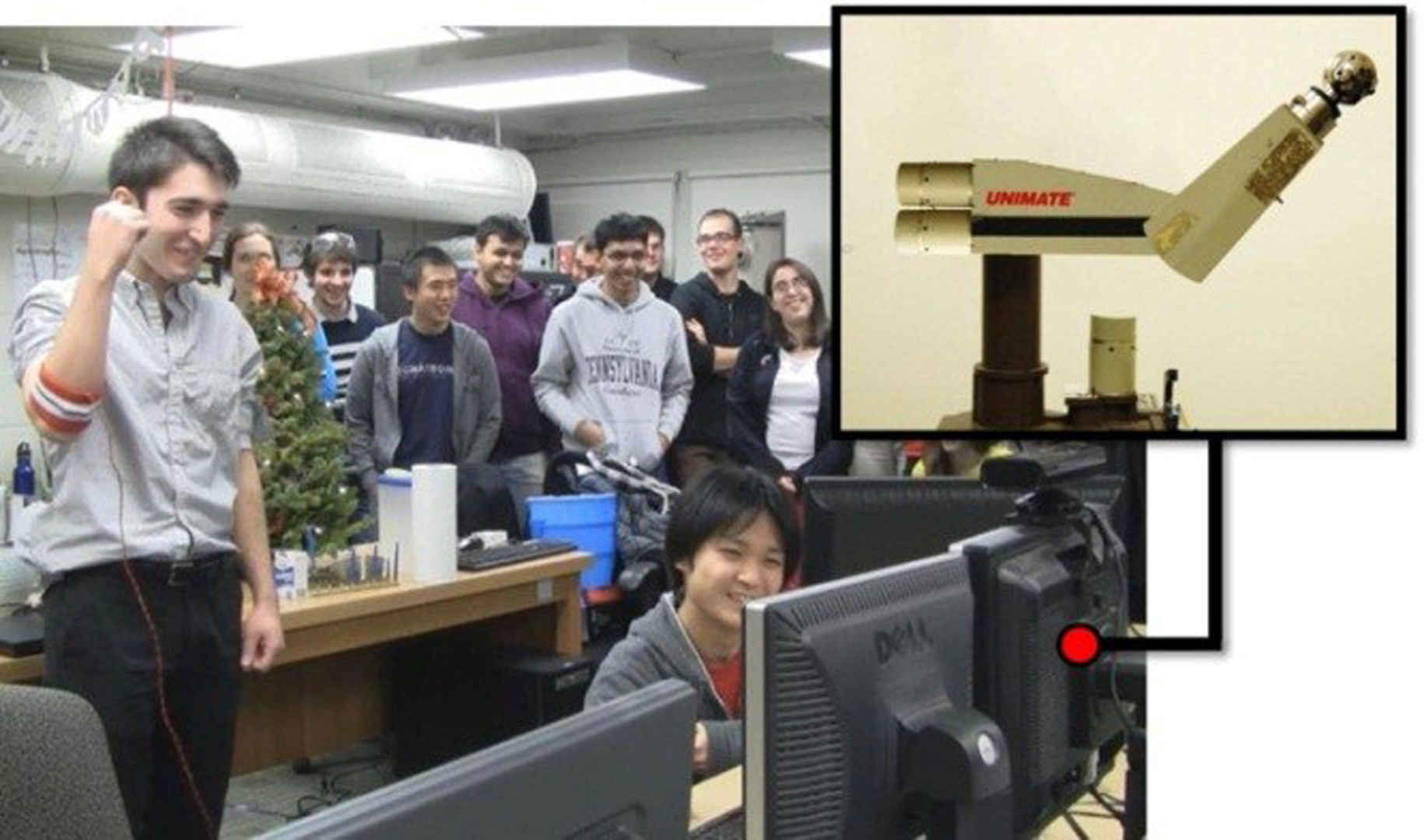“Jointonation: Robotization of the Human Body by Vibrotactile Feedback”
Conference:
Experience Type(s):
Title:
- Jointonation: Robotization of the Human Body by Vibrotactile Feedback
Description:
Movies, comics, and video games frequently involve robotic heroes composed of metallic parts. Although these characters exist only in the realm of fantasy, many of us would be interested in becoming them, if only for a short time. The question therefore naturally arises: how would it feel to be a robot?
References:
[1]
Kurihara, Y., Hachisu, T., Kuchenbecker, K. J. and Kajimoto, H.: Virtual robotization of the body material by vibration recording and rendering. In Proceedings of the International Conference on Advances in Computer Entertainment Technology (ACE), 2013 (to appear).
[2]
TN Games. 3rd Space Gaming Vest. http://tngames.com/products (Last access: Jun. 11, 2013)
[3]
Ooshima, S., Hashimoto, Y., Ando, H., Watanabe, J. and Kajimoto, H.: Simultaneous presentation of tactile and auditory motion to the abdomen to present the feeling of being slashed. In Proceedings of the SICE Annual Conference, 467–471, 2008.
[4]
Ince, G., Nakadai, K., Rodemann, T., Hasegawa, Y., Tsujino, H. and Imura, J. I.: Ego noise suppression of a robot using template subtraction. In Proceedings of the IEEE/RSJ International Conference on Intelligent Robots and Systems (IROS), 199–204, 2009.
[5]
McMahan, W. and Kuchenbecker., K. J.: Spectral subtraction of robot motion noise for improved event detection in tactile acceleration signals. In: Haptics: Perception, Devices, Mobility, and Communication, In Proceedings of the EuroHaptics, 326–377, 2012.
[6]
Okamura, A. M., Cutkosky, M. R. and Dennerlein, J. T.: Reality-based models for vibration feedback in virtual environments. IEEE/ASME Transactions on Mechatronics, 6, 245–252, 2001.
[7]
Hachisu, T., Sato, M., Fukushima, S. and Kajimoto, H.: Augmentation of material property by modulating vibration resulting from tapping. In Proceedings of the EuroHaptics, 173–180, 2012.
[8]
Romano, J. M. and Kuchenbecker, K. J.: Creating realistic virtual textures from contact acceleration data. IEEE Transactions on Haptics, 5, 2, 109–119, 2012.
[9]
Minamizawa, K., Kakehi, Y., Nakatani, M., Mihara, S. and Tachi. S.: TECHTILE Toolkit: a prototyping tool for designing haptic media. In Proceedings of the ACM SIGGRAPH 2012 Emerging Technologies, 22, 2012.
[10]
Kamuro, S., Takeuchi, Y., Minamizawa, K. and Tachi, S.: Haptic editor. In Proceedings of the ACM SIGGRAPH ASIA 2012 Emerging Technologies, 14, 2012.
[11]
Kurihara, Y., Hachisu, T., Sato, M., Fukushima, S. and Kajimoto, H. Virtual Alteration of Body Material by Periodic Vibrotactile Feedback. In Proceedings of the IEEE Virtual Reality Conference, 2013.
[12]
Lackner, J. R.: Some proprioceptive influences on the perceptual representation of body shape and orientation. Brain, 111, 281–297, 1988.
[13]
Botvinick, M. and Cohen, J.: Rubber hands “feel” touch that eyes see. Nature, 391, 756, 1998.
[14]
Slater, M., Perez-Marcos, D., Ehrsson, H. H. and Sanchez-Vives, M. V.: Inducing illusory ownership of virtual body. Frontiers in Neuroscience, 3, 214–220, 2009.
[15]
Dabrowski, J. Rand Munson E. V.: Is 100 milliseconds Too Fast? In Proceedings of the ACM Human Factors in Computing Systems, 317–318, 2001.





